Baku. 26 February. REPORT.AZ/ 3,888 people were registered as missing, 1,477 people were liberated from captivity as a result of the conflict which erupted with the territorial claims and ethnicity-based provocations of Armenia against Azerbaijan. There were Azerbaijani citizens of Russian, Tatar descent among people who were taken hostage by Armenian barbars.
Armenian military subjected them to grave tortures only for being Azerbaijani citizens. It did not matter for them whether those captured were civilians, women or elderly people.
Report presents the testimonies of a number of women of Russian and Tatar descent:
Abbasova Nina Georgiyevna was born in Kemerovo province of the Russian Federation in 1937. She is Russian by nationality. She was taken hostage on July 23, 1993 and liberated on July 25, 1994.
She noted that on July 23, 1993 she and her husband Abbasov Ali Rasul oghlu (born in 1930) were taken hostage on the day of invasion of Aghdam by Armenian armed forces. They were separated right after being taken hostage. Nina saw her husband once again only after he was released from captivity. Nina Georgiyevna said that even in the films about fascism she did not see what she saw and went through in Armenian captivity. Before her eyes Armenian military subjected to cruel tortures a teacher Sariyev Ali Zohrab oghlu who was captured with his family from Beylagan region, insulted and raped an engaged girl who was also taken hostage. They beat to death an Azerbaijani soldier who was an Aghdam resident. Armenians showed an inhumane attitude towards hostages and captives..
The ICRC representatives visited Nina Georgiyevna and another woman of Russian descent Imanova Lyubov Yakovlevna and suggested them going to Russia, but they refused and said they wanted to stay in Azerbaijan. Despite being Russian and woman, Nina Georgiyevna was released a year later, on July 25, 1994.
Her husband, 65-year-old Abbasov Ali Rasul oghlu was held captive for one more year and was released on June 8, 1995. Ali suffered from the injuries he received in captivity, saw nightmares every night after being liberated and was unable to recover from this psychological trauma. The burns on his body still hurt him. After living for a year following release, Ali died in 1996.
Jafarova Maryam Zinatovna was born in Astrakhan province of the Russian Federation in 1930 and lived in Zangilan. On December 3, 1993, she was taken hostage and was released on March 26, 1994.
In her testimonies, she said Zangilan civilians had to leave their homes because of the fast advancement of Armenian occupation troops. Maryam Jafarova thought Armenian military will not touch her because she was Tatar and she also thought she was too old and would not be able to walk a long way. Thus, she lived alone for four days. From her window she saw Armenians plundering, setting houses on fire, breaking doors and windows and understood that it was not safe to stay there. On November 3 she left her house with two light sacks. When she reached the school she saw a group of 20 Armenian teens aged between 14 and 15 who were plundering the houses. They asked where she was going and she said she is heading to Hadrut. They understood that she was not Armenian and attacked her, took off her sacks, dragged her by the hair and tore her clothes. Then, beating and dragging her, they took her to the buildings. At that time a soldier aged between 35-40 years came down from KamAz which approached the site. After arguing with them for quite long, he took Maryam Jafarova to the bus terminal. In the evening they got to a military unit in Khankandi. There she was kept for three days in a room on the second floor of the military unit. On March 26, 1994, she was liberated through exchange of hostages.
Kolesov Dmitriy Yuryevich was born in Baku in 1980 and is of Russian descent. On October 23, 1999, he was taken hostage by Armenians and liberated on July 18, 2000.
He said that while serving his duty on the post on the line of confrontation of the Armenian and Azerbaijani troops in the area of Jabrayil district, on the frontline, he was hit in his head and fainted. When he regained consciousness, he understood that he was captured by Armenians. Armenian soldiers took Kolesov to a two-story building in occupied Fuzuli, where they threatened to throw him from the second floor. On the same day he had his eyes tied and took to their position on Leletepe highland by car.
Dmitriy was interrogated by a 35-40-year-old major. At his order, Armenians beat Kolesov with fittings, rubber hoses and urged dogs on him. Dogs bit Dmitriy, leaving deep and avulsed wounds on his body, after which the Armenians again started beating him, deliberately targeting those wounds. Then Armenians took Dmitriy to a three-story staff, allegedly in Jabrayil region, and again beat him with rubber hoses. Three days later he had his eyes and hands tied and was taken to the detention facility in the territory of Armenia. Officer Grigoryan by surname (later Dmitriy identified him as general Grigoryan Manvel Sektorovich who later became Deputy Minister of Defense of Armenia - author) interrogated and ordered to beat Kolesov.
As Dmitriy was held there, Armenians twice injected him with some mixture. Every time after the injection he had a fever, felt bad and suffered from dizziness. In addition, Armenian militants deliberately beat him with fittings and rubber hoses in the area of his spine, seriously damaging it. Later a military in the rank of a major tied Dmitriy's hands and eyes, put him into a car and brought to the Yerevan military police. In the military police a strong-built Armenian with a tied eye beat him and threatened to kill. After he was kept for 3 or 4 days in a cold ward with concrete floor, he was put into a car and together with another hostage Rzayev Vagif Kerim oghlu they were brought to the Security Committee. In two days Vagif Rzayev was taken somewhere and Dmitriy was put into a ward with an inmate named Vagan Sergeyevich Harutyunyan. After the three-month detention together with Vagan Harutyunyan, he was transferred to the ward with terrorist Vram who participated in the armed assault on the Armenian parliament where 8 parliamentarians died and then was put into a ward with nearly ten Azerbaijani servicemen. Before Dmitriy was liberated, Mehdiyev Elnur Farman oghlu and two more hostages whose names and surnames he did not know were brought to his ward. Armenian barbars kept Elnur Mehdiyev outside in the frost until morning. Elnur had his legs frost-bitten but instead of treating him, Armenians simply cut his five fingers on the leg. Dmitriy Kolesov was released on July 18, 2000.
Shevelev Vladimir Ivanovich was born in 1926 in the Azerbaijani city of Agdam. He was taken hostage on July 23, 1993, and released on April 28, 1994.
Shevelev said that he, together with his family, lived in Aghdam and worked in the sphere of road operation. He had an elderly mother and his brother was a recumbent patient therefore he did not leave the city, when the Armenian armed formations occupied Aghdam. Vladimir thought that, if during the Second World War, Germans did not touch the civilians in the occupied areas, it means Armenians will not touch them too, in addition, they were of Russian descent and decided to stay for this reason too. On July 21, 1993, the Armenian army started a massive attack on Aghdam. On July 22 he went out to buy some bread but after walking some distance, he heard the sounds of shelling and cannonade. Turning back, he saw that the neighbor houses were all ablaze.
Walking stealthily, he returned home, but when he approached, he heard his poor mother crying: "Cruel monsters! Why did you kill him?" And the answer to his mother: "Shut up, we did it right!" Vladimir understood that his brother is already dead. He ran away and hid. When returning home, he saw a scary picture. After his 58-year-old brother, militants shot dead his 89-year-old mother, plundered their house and set it on fire. After going outside, he rushed to look for her 48-year-old sister. Realizing, that he won't find his sister, Vladimir ran towards the water channel. Along the road he saw many disfigured bodies of Azerbaijani children and women. Approaching to the post near Sarijali village of Agdam, he was taken hostage by Armenian military. Drunken soldiers took his money, strongly beat and interrogated him. Then he was brought to Aghdam, where he was kept in a garage together with several elderly residents of Aghdam. Armenians forced all hostages, despite their age, to take part in plundering of houses and apartments together with them. On July 29, 1993, Armenian soldier - woman Janetta by name, together with the ICRC representatives came to the garage and took him with themselves. Two more women from the psychoneurological hospital of Aghdam were taken to the car on the way and together they were brought to a child health center. Next morning he was placed in a senior center. On September 8, a priest in a military uniform from Omsk yielded to his begging and took him to Aghdam. He collected what was left of his relatives - the head, legs and hands of mother Vera Davidovna, brother Anatoliy Ivanovich and sister Svetlana and buried them. In late 1993 he together with several elderly Russian hostages were taken to the senior center in Yerevan and was kept there until their liberation on April 28, 1994.
Notably, a book 'In Armenian captivity: Antology of tortures and murders' contains the stories of some captive and hostage Azerbaijanis. The book in Azerbaijani and English languages was published by the State Commitee for War prisoners, hostages and missing people.
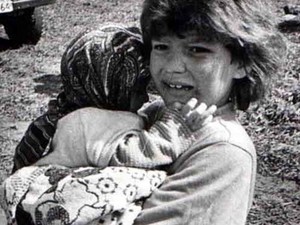
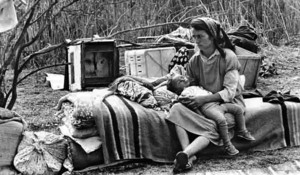
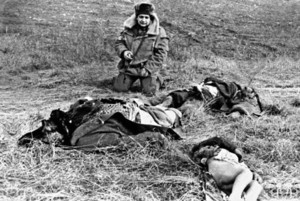
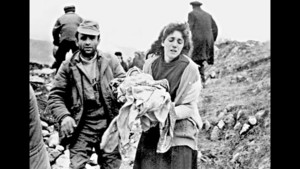
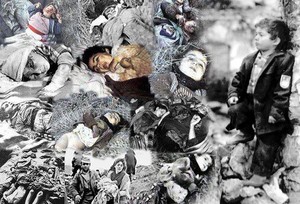


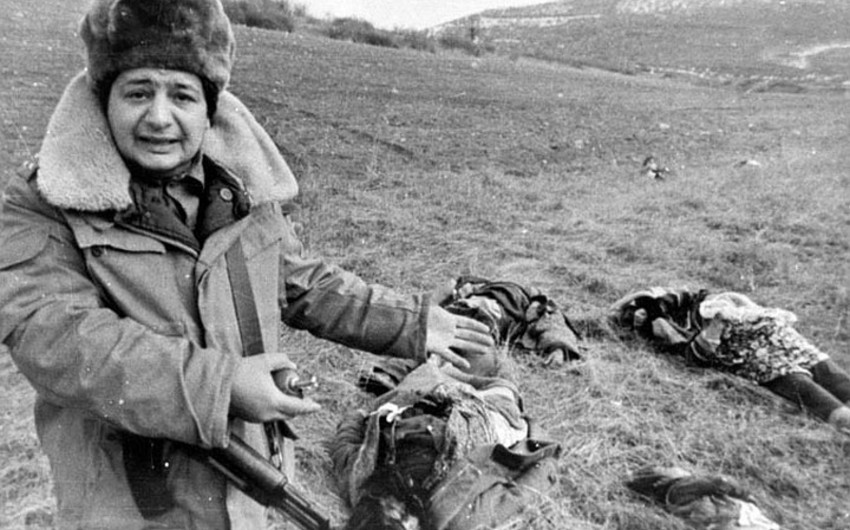 https://static.report.az/photo/eee6101e-75d9-43bb-a77d-d241b0ef3e6e.jpg
https://static.report.az/photo/eee6101e-75d9-43bb-a77d-d241b0ef3e6e.jpg

